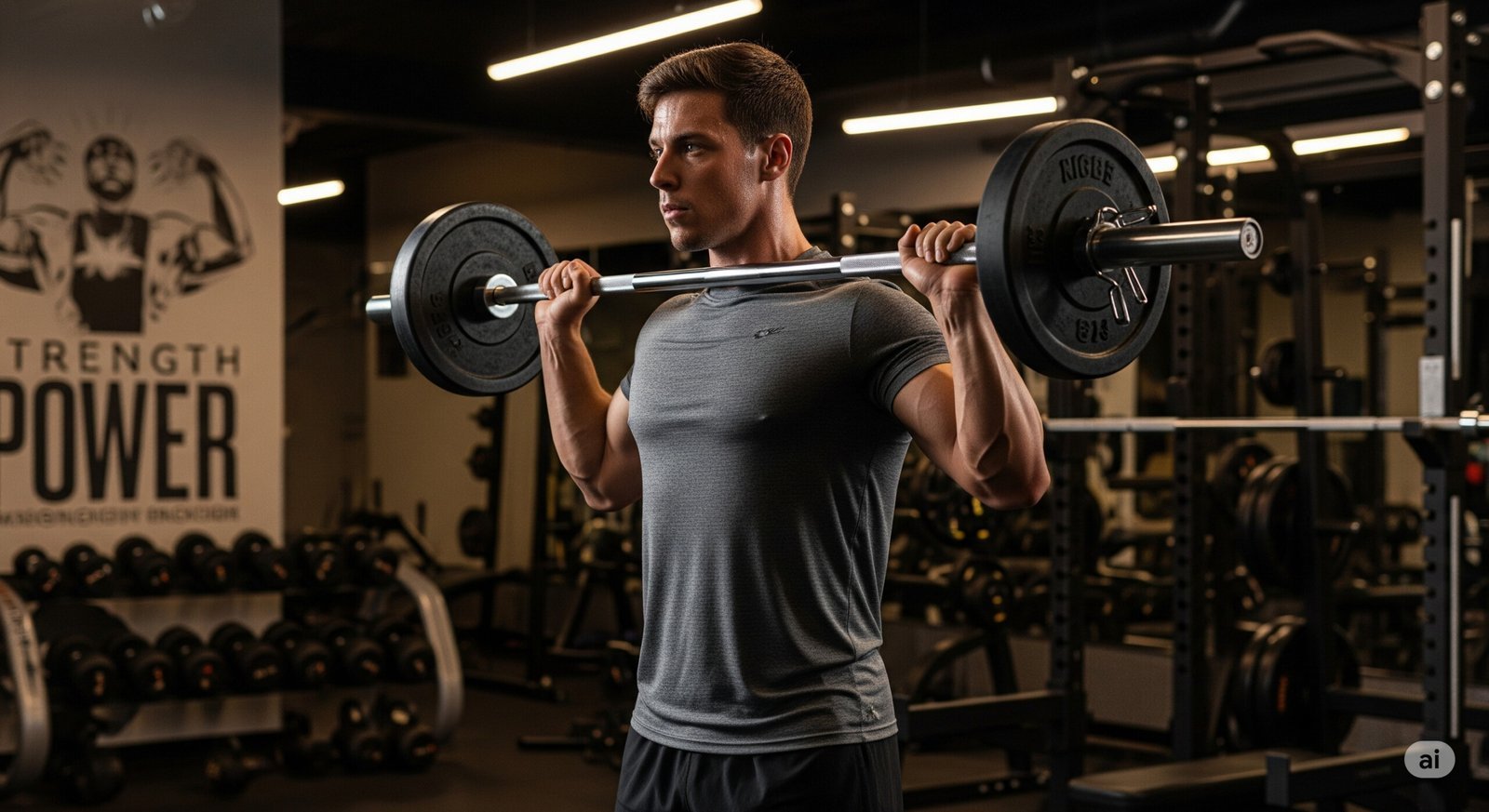Upright Row : Muscles Worked, Powerful Variations, and Proper Form for Maximum Gains
What You Need to Know
Strength training isn’t just about lifting heavy weights; it’s about choosing the right exercises that target specific muscle groups, ensuring balanced growth and power. One such exercise that packs a punch is the upright row. It’s a favorite among gym-goers and athletes alike, known for its ability to engage multiple upper-body muscles. Whether you’re aiming to build broader shoulders or enhance your traps, the upright row is a solid addition to your routine.
Thank you for reading this post, don't forget to subscribe!But if you’ve ever tried this move and felt something wasn’t quite right, you’re not alone. Many people struggle with the form and understanding which muscles are actually being worked. It’s essential to get the upright row right, not only for maximizing your gains but also for avoiding injury—especially in the shoulders.
In this article, we’ll break down everything you need to know about the upright row: from the muscles it targets, to variations, to tips for perfect form, so you can start incorporating it into your training safely and effectively.
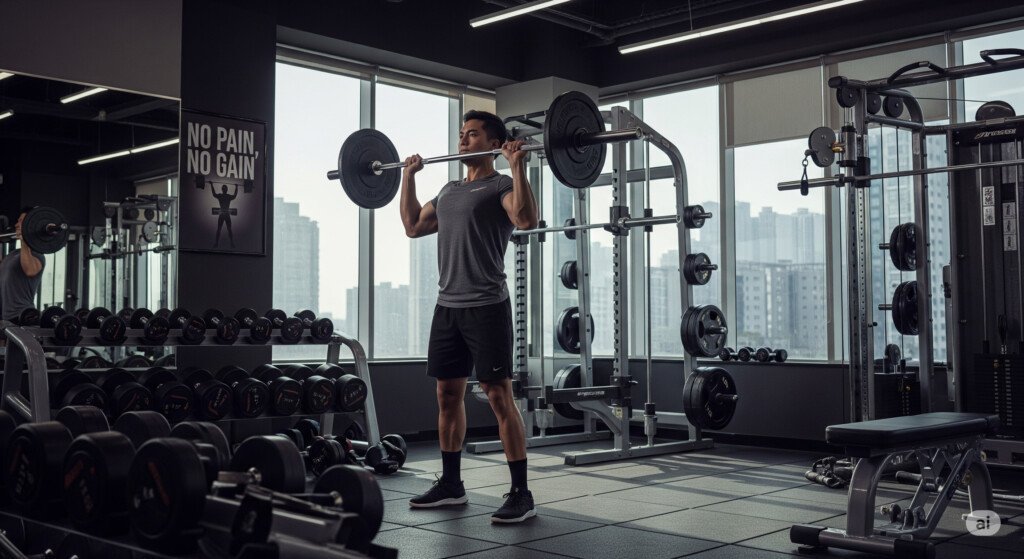
What Is an Upright Row?
The upright row is a strength-training exercise designed to target the shoulders and upper back. It involves lifting a weight vertically in front of you, typically using a barbell, dumbbells, or cables, until it reaches chest height. The primary goal is to engage the deltoids (shoulder muscles), trapezius (upper back), and biceps. It’s a compound movement, meaning it works multiple muscle groups at once, making it both efficient and effective.
Who Should Do the Upright Row?
The upright row is perfect for individuals who want to strengthen and grow their upper body, particularly the shoulders and traps. It’s an excellent exercise for bodybuilders, athletes, or anyone focusing on building upper-body strength and definition.
However, it’s important to note that the upright row isn’t suitable for everyone. If you have a history of shoulder injuries or discomfort, this movement may aggravate those issues due to the inward rotation it places on the shoulder joint. In such cases, modifications or alternative exercises should be considered.
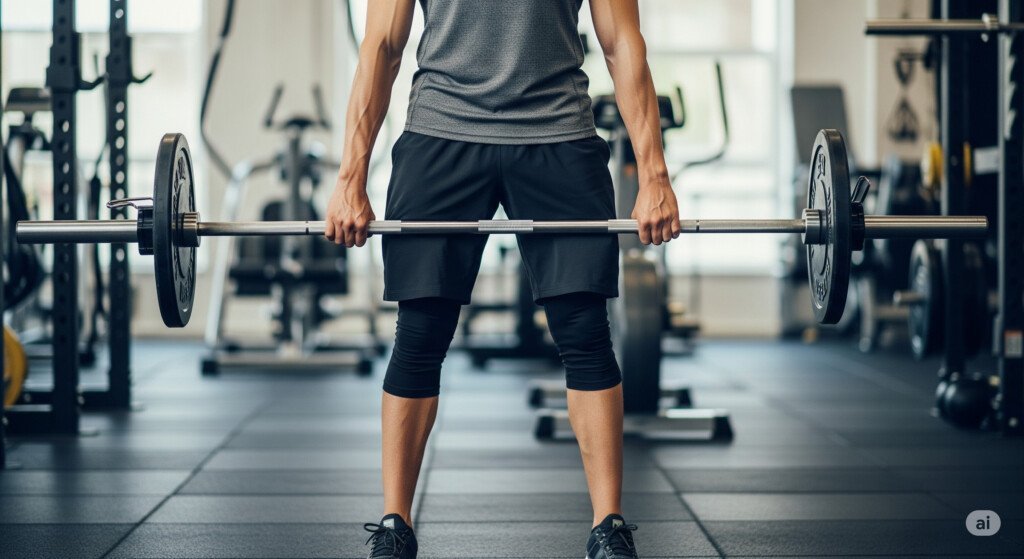
Muscles Worked in Upright Rows
When you perform an upright row, a variety of muscle groups are activated. Understanding which muscles are engaged during this exercise can help you see why it’s such an effective compound movement. Let’s dive into the upright row muscles worked.
Deltoids (Shoulders)
The deltoid is the primary muscle worked during the upright row, particularly the lateral (middle) part of the shoulder. As you lift the weight upwards, your deltoid contracts to stabilize your arm and lift the load. Over time, regular upright rows can help create that desirable broad-shouldered look.
Trapezius (Upper Back)
The trapezius muscle, which spans from the neck down to the middle of your back, is heavily engaged during the upright row. The upper traps are activated to help elevate your shoulders as you pull the weight upward. With consistent training, upright rows can help increase trap development, leading to a strong, defined upper back.

Biceps
While not the main target, the biceps are still involved in the upright row. As the weight is pulled up, your arms bend slightly, and the biceps help to stabilize the movement. This makes the upright row a good exercise for overall arm development, as well as shoulder and upper back.
Forearms
Because of the grip strength required to hold the barbell or dumbbells during the movement, the forearms are also activated. You’ll notice that if you use a heavier weight, your forearms will feel the strain as they help to maintain your grip.
To help visualize this, here’s a simple breakdown of the muscles worked:
- Primary Muscles: Deltoids, Trapezius
- Secondary Muscles: Biceps, Forearms
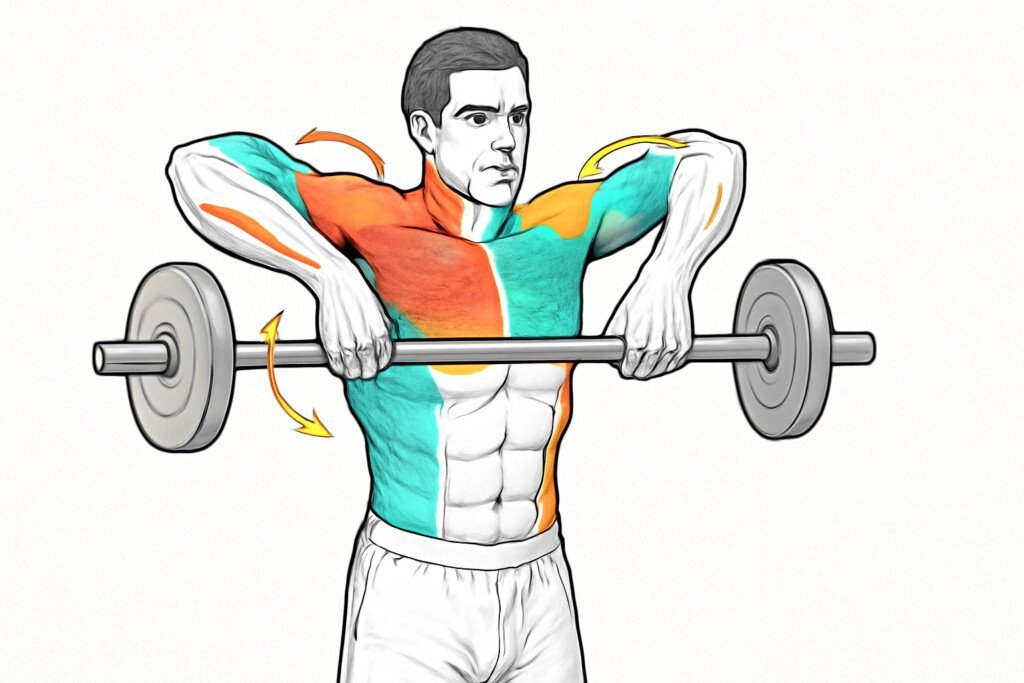
How to Perform an Upright Row Correctly
Executing the upright row with proper form is crucial to maximize muscle engagement and avoid injury. Here’s a step-by-step guide to performing the upright row correctly.
Step-by-Step Guide to the Upright Row:
- Starting Position:
- Stand with your feet shoulder-width apart, holding a barbell (or dumbbells) with an overhand grip, hands positioned about 6–8 inches apart.
- Your arms should hang down in front of you with a slight bend in your elbows. Engage your core and straighten your back to maintain a neutral spine.
- The Movement:
- Begin by pulling the weight straight up along your body. Keep your elbows higher than your wrists as you lift. The barbell (or dumbbells) should travel in a straight line, close to your body, all the way up until your elbows reach about chest height.
- Focus on lifting with your elbows, not your hands or wrists. Imagine you’re trying to raise your elbows as high as possible.
- Pause briefly at the top to really squeeze the traps and deltoids.
- Lowering the Weight:
- Slowly lower the weight back down to the starting position, maintaining control of the movement.
- Avoid letting the weight drop quickly. Keep tension on the muscles as you lower the weight.
Common Mistakes to Avoid:
- Using Too Much Weight:
- Lifting too heavy a load can compromise your form. It’s important to choose a weight that allows you to control the movement throughout the entire range of motion.
- Elbows Too Low:
- If your elbows don’t lift above the level of your wrists, you’re not fully activating the deltoids and traps. Ensure the elbows lead the movement.
- Round Shoulders:
- Maintain good posture throughout the movement. Rounding the shoulders can strain the shoulder joint and reduce the effectiveness of the exercise.
- Overextending at the Top:
- While it’s important to lift the weight to chest height, avoid overextending your shoulders at the top of the lift. This could put undue strain on the shoulder joints.
Safety Tips for Shoulder Health:
- Don’t Lift Too High: Avoid lifting the weight higher than your chest level to prevent shoulder impingement.
- Warm-Up Properly: Make sure to warm up your shoulders before doing upright rows with lighter weights to prepare your joints for the load.
- Consider Alternative Grips: Some people find that using a wider grip reduces shoulder discomfort. Experiment with your hand placement if you feel any strain in your shoulders.

Cable Upright Row Variation
While traditional upright rows using a barbell or dumbbells are highly effective, the cable upright row offers some distinct benefits. The cable machine provides constant tension throughout the entire movement, which can lead to better muscle engagement and less strain on the shoulders.
Benefits of Using Cables Over Barbells/Dumbbells:
- Constant Tension: Unlike free weights, cables offer continuous tension, leading to a more consistent and controlled movement.
- Reduced Shoulder Strain: For those who experience discomfort with a barbell, the cable version can sometimes feel gentler on the shoulder joints.
- Variety and Versatility: Using cables allows for a range of hand grips and attachments, offering multiple variations of the upright row.
How to Perform a Cable Upright Row:
- Attach a rope handle or straight bar to the low pulley of a cable machine.
- Stand facing the machine with your feet shoulder-width apart. Grasp the handle with an overhand grip (palms facing your body).
- Step back slightly, ensuring there is tension in the cable.
- With a slight bend in your knees and your core engaged, pull the handle up toward your chest, leading with your elbows.
- Pause at the top, squeezing the traps and deltoids, then lower the weight slowly back down.
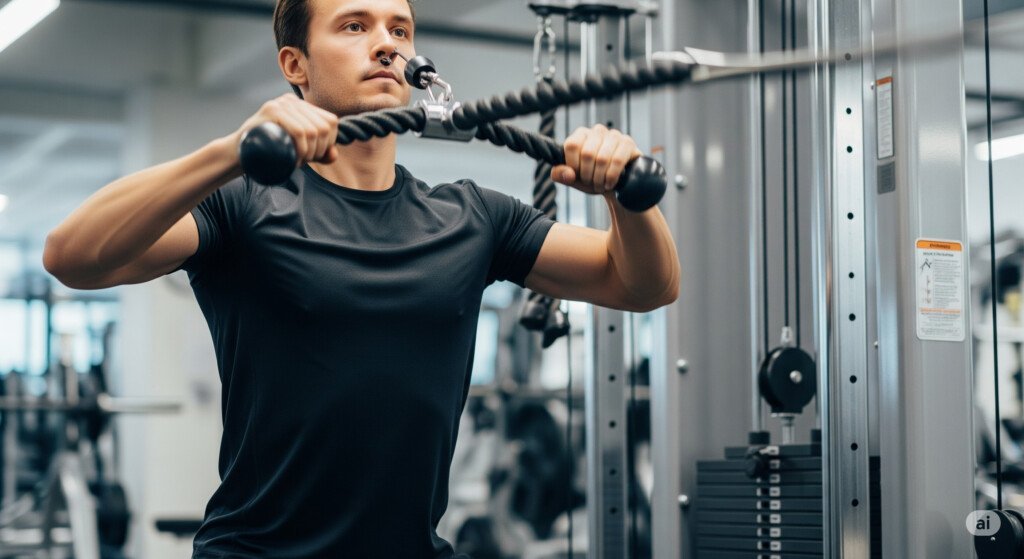
Other Upright Row Variations
While the standard upright row is highly effective, there are several variations of this exercise that you can incorporate into your routine to target the muscles from different angles and provide a greater challenge. Whether you’re looking to add variety to your workouts or focus on different muscle groups, these variations are worth exploring.
Dumbbell Upright Row
The dumbbell upright row is a great alternative to the traditional barbell version. Using dumbbells instead of a barbell allows for more natural movement and can help to engage the muscles differently.
Benefits of the Dumbbell Upright Row:
- Independence of Movement: Since each arm is holding its own dumbbell, the body is forced to work each side independently. This can help reduce muscle imbalances.
- More Range of Motion: Dumbbells allow for a slightly greater range of motion, especially when the hands are raised higher, which could result in more trap and deltoid activation.
How to Perform the Dumbbell Upright Row:
- Stand tall with your feet shoulder-width apart, holding a dumbbell in each hand with an overhand grip.
- Let the dumbbells hang in front of you, keeping your arms fully extended and your core engaged.
- Pull the dumbbells upwards, leading with your elbows, until your arms are parallel to the ground.
- Pause at the top for a moment, focusing on squeezing your traps and shoulders.
- Lower the dumbbells back down in a controlled manner, repeating for desired reps.
The dumbbell version can be an excellent option if you prefer a more isolated movement and a greater focus on shoulder mobility.
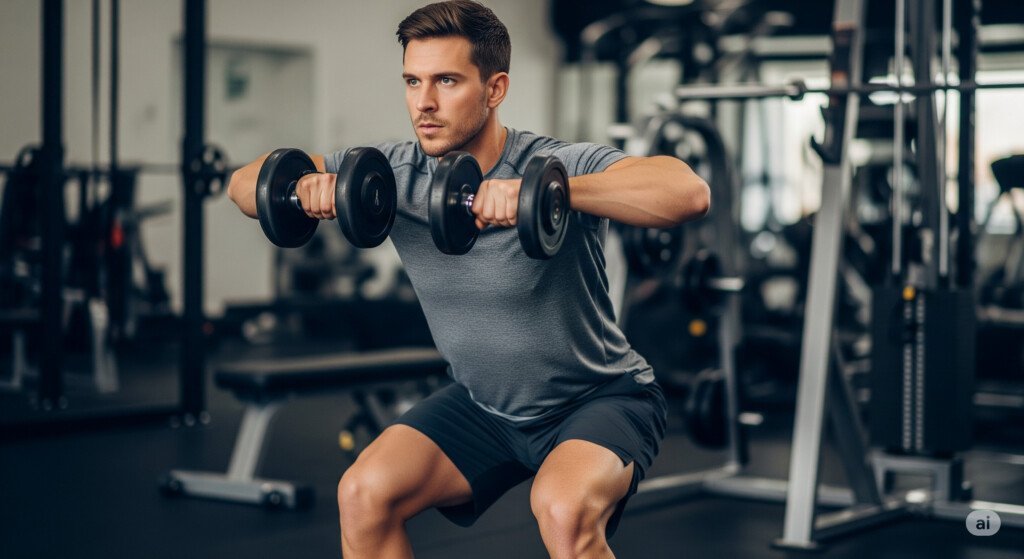
Smith Machine Upright Row
Using the Smith machine for the upright row variation allows you to add extra weight while minimizing the risk of injury. The machine’s fixed bar path provides stability, so you can focus on lifting heavier without worrying about balance.
Benefits of the Smith Machine Upright Row:
- Stability: The fixed movement path offered by the Smith machine allows you to focus on the muscles being worked without worrying about stabilizing the weight.
- Heavier Lifts: If you’re aiming to push heavier weights, the Smith machine can help you load up the bar safely while maintaining proper form.
How to Perform the Smith Machine Upright Row:
- Set the Smith machine barbell to a height just below your waist and load it with the appropriate weight.
- Stand tall with your feet shoulder-width apart and grasp the bar with an overhand grip, keeping your hands about shoulder-width apart.
- Begin the movement by pulling the bar straight up toward your chest, keeping your elbows high.
- Squeeze your traps and deltoids at the top, then lower the bar slowly back down to the starting position.
- Repeat the motion for the desired number of reps.
The Smith machine upright row allows you to focus solely on the muscle engagement, especially when you’re attempting heavier lifts that might otherwise be challenging to control.
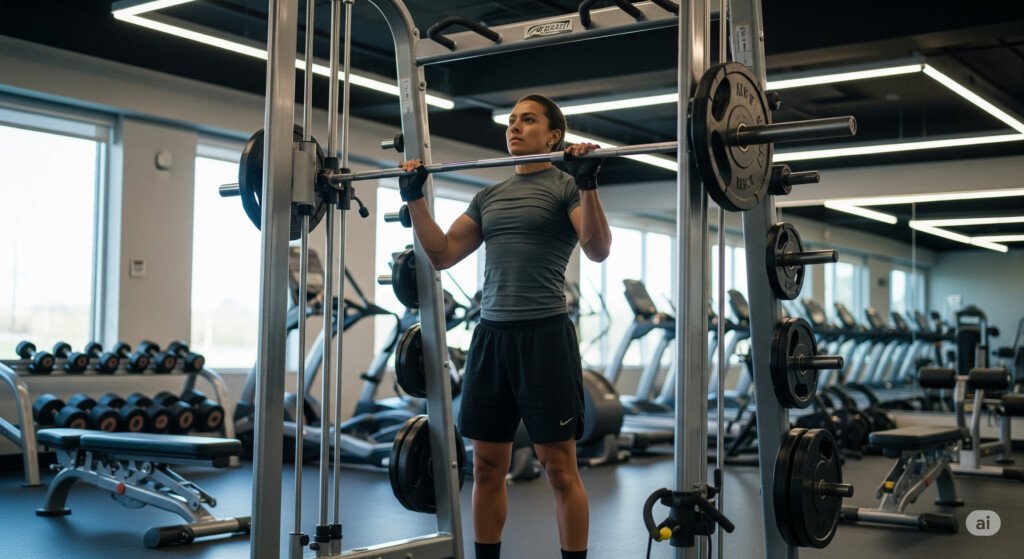
Wide-Grip Upright Row for More Trap Engagement
Switching to a wide grip on the upright row will change the dynamics of the exercise, particularly by shifting more of the workload to the trapezius muscles. This variation is great if you’re specifically trying to grow your traps.
Benefits of the Wide-Grip Upright Row:
- Greater Trap Activation: A wider grip shifts the focus of the movement to the upper traps, which can help you develop a more defined upper back.
- Reduced Shoulder Strain: The wider grip tends to place less stress on the shoulders, making this variation more shoulder-friendly for some individuals.
How to Perform the Wide-Grip Upright Row:
- Begin with a wider grip than normal on the barbell, about 10–12 inches apart.
- Follow the same upright row movement, but with the wider hand placement. Keep your elbows higher than your wrists as you lift the bar.
- Pull the bar upwards, leading with your elbows and focusing on activating your traps.
- Pause briefly at the top, then lower the bar slowly back to the starting position.
This variation can provide excellent results for enhancing your trapezius development while still working the shoulders and biceps.
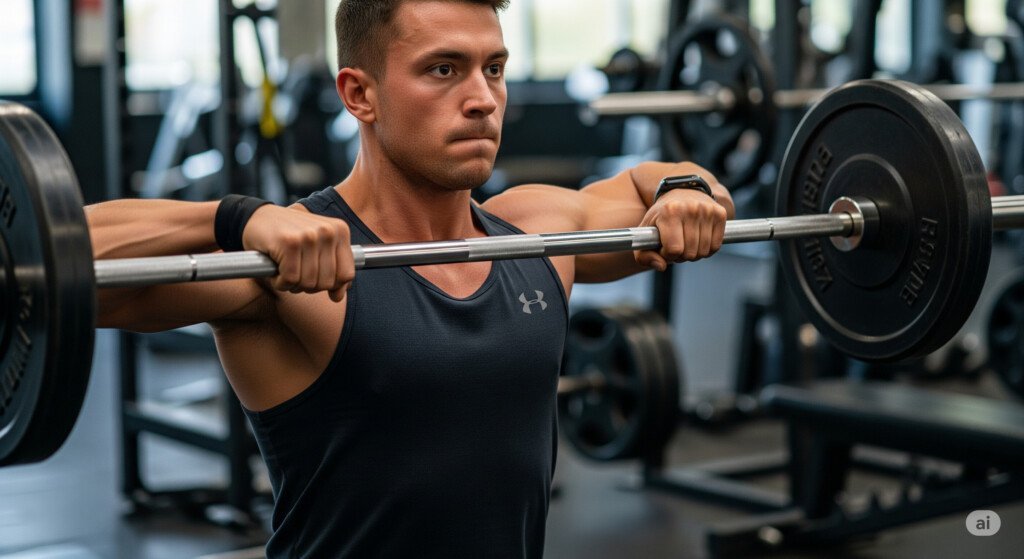
Conclusion & Training Tips
The upright row is a time-tested exercise that delivers incredible benefits for building upper-body strength, particularly in the shoulders and traps. Whether you’re using a barbell, dumbbells, or cables, it’s a versatile move that can be adjusted to suit your specific needs and goals. By focusing on proper form, avoiding common mistakes, and incorporating variations, you can maximize the effectiveness of this movement.
As you explore upright rows, try both the barbell and cable upright row variations to see which one resonates best with your body. Keep your training balanced, and don’t forget to warm up your shoulders and back before diving into heavy lifting.
FAQ
1. Is the Upright Row Bad for Shoulders?
The upright row is often considered a shoulder-intensive movement, and when done incorrectly or with too much weight, it can place undue stress on the shoulder joints. The main risk comes from the internal rotation of the shoulder that occurs as the arms are raised. This motion can aggravate shoulder impingement, especially for individuals with pre-existing shoulder issues.
To mitigate this risk:
Ensure you’re lifting a manageable weight.
Focus on proper form, ensuring that your elbows are leading the movement.
Avoid overextending the bar above shoulder height.
If you’re concerned about shoulder health, consider using a wide-grip variation or switching to cable upright rows, which tend to reduce shoulder strain.
2. What’s the Best Grip for Upright Rows?
The best grip for upright rows depends on your goals and comfort. An overhand grip (palms facing down) is the most common and helps engage the shoulders and traps. A wide grip on the bar will shift the focus more toward the traps, while a narrow grip will put more emphasis on the shoulders.
Experiment with different grips to find what works best for you, and always ensure you maintain good form.
3. Can Beginners Do a Cable Upright Row?
Yes! The cable upright row is an excellent option for beginners because it allows for more controlled movement. The cable provides constant tension, and the ability to adjust the weight makes it easier to start with lighter loads. Beginners should start with a light weight and focus on mastering the form before increasing the resistance.
4. How Heavy Should I Lift for Upright Rows Muscles Worked Optimally?
The amount of weight you should lift depends on your strength level and fitness goals. For most people, starting with a moderate weight where you can perform 8–12 reps with proper form is ideal. This rep range promotes muscle growth without compromising safety.
As you progress, gradually increase the weight while focusing on maintaining perfect form. Always prioritize quality over quantity when it comes to lifting heavy.
5. What’s the Difference Between an Upright Row and a Shrug?
While both exercises target the traps, the shrug focuses purely on the upper trapezius by lifting the shoulders straight up toward your ears. The upright row, on the other hand, involves lifting a weight vertically along the body, engaging the shoulders, traps, and biceps in a more dynamic movement. The upright row is a compound exercise that works multiple muscle groups, while shrugs are more isolated to the traps.
Disclaimer:
This post may contain affiliate links. If you purchase through them, we may earn a small commission at no extra cost to you. Also, this content is for informational purposes only and does not substitute professional medical advice.

